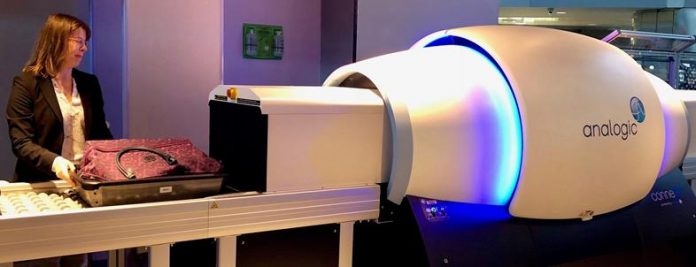The need for passengers to routinely remove laptops and liquids from hand luggage for screening at selected US airports should become a thing of the past with the introduction of 3D computed tomography (CT) scanners.
One reason that laptops must be scanned separately with conventional 2D X-ray scanners is that they can be large enough to mask the presence of other items, such as knives, in hand luggage.
Following trials conducted last year in Phoenix and Boston, the US Transport Security Administration (TSA) will begin installing CT scanners at 40 airports including JFK in New York, O’Hare in Chicago, Los Angeles, and Washington-Dulles International.
According to the TSA, the new scanners apply ‘sophisticated algorithms for the detection of explosives and creates a 3D image that can be viewed and rotated on three axes for thorough visual image analysis.’ In other words, they create an image which can be rotated 360-degrees, in the same way that images from a medical CT scanner can be used to accurately detect the location of cancers.
The TSA says the CT scanners, which cost about $A400,000 each, should result in fewer bag checks, and mean that in future passengers should be able to leave laptops and liquids in their carry-on bags.
CASA’s Technical Operations team says that 3D scanning technology can also improve the detection of dangerous goods not permitted to be carried by passengers, thus enhancing safety as well as security.



This is the next step in reducing delays at carry on luggage scanners at major airports.
How about scanning for oversize items and rejecting them immediately!